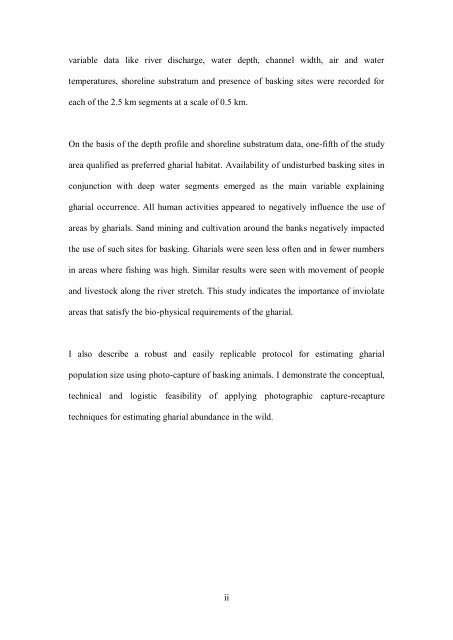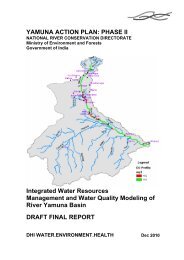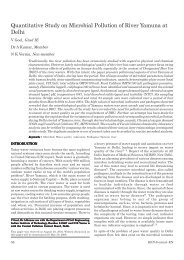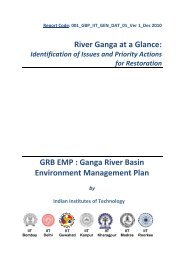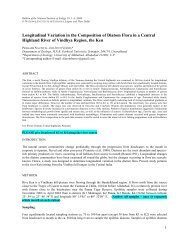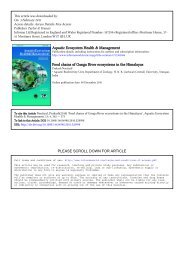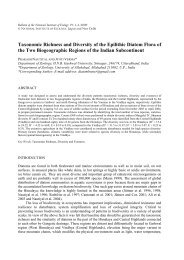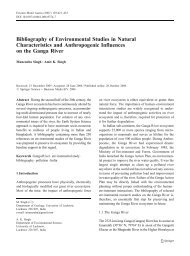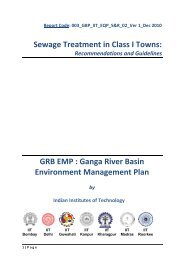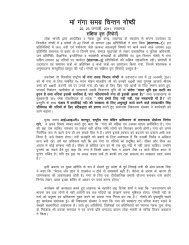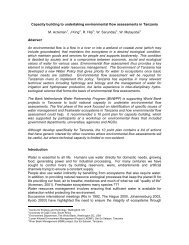Ecological and anthropogenic covariates ... - GANGAPEDIA
Ecological and anthropogenic covariates ... - GANGAPEDIA
Ecological and anthropogenic covariates ... - GANGAPEDIA
You also want an ePaper? Increase the reach of your titles
YUMPU automatically turns print PDFs into web optimized ePapers that Google loves.
variable data like river discharge, water depth, channel width, air <strong>and</strong> water<br />
temperatures, shoreline substratum <strong>and</strong> presence of basking sites were recorded for<br />
each of the 2.5 km segments at a scale of 0.5 km.<br />
On the basis of the depth profile <strong>and</strong> shoreline substratum data, one-fifth of the study<br />
area qualified as preferred gharial habitat. Availability of undisturbed basking sites in<br />
conjunction with deep water segments emerged as the main variable explaining<br />
gharial occurrence. All human activities appeared to negatively influence the use of<br />
areas by gharials. S<strong>and</strong> mining <strong>and</strong> cultivation around the banks negatively impacted<br />
the use of such sites for basking. Gharials were seen less often <strong>and</strong> in fewer numbers<br />
in areas where fishing was high. Similar results were seen with movement of people<br />
<strong>and</strong> livestock along the river stretch. This study indicates the importance of inviolate<br />
areas that satisfy the bio-physical requirements of the gharial.<br />
I also describe a robust <strong>and</strong> easily replicable protocol for estimating gharial<br />
population size using photo-capture of basking animals. I demonstrate the conceptual,<br />
technical <strong>and</strong> logistic feasibility of applying photographic capture-recapture<br />
techniques for estimating gharial abundance in the wild.<br />
ii


